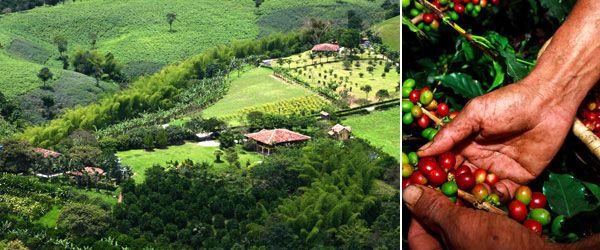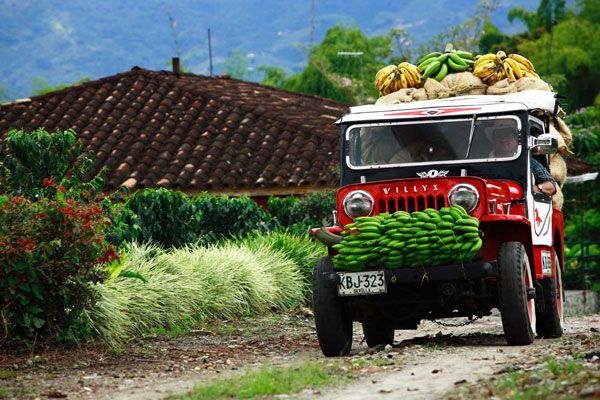The coffee landscape of Colombia lies in the foothills of the Cordillera de los Andes where, for centuries, coffee has been cultivated in small plots in the high forest and harvested by hand. Last year UNESCO recognised the importance of the traditional cultivation by adding the 'Colombian Coffee Triangle' to the World Heritage List. That brings the grand total of UNESCO sites in Colombia to seven, both cultural and natural: the fortresses, port and monuments of Cartagena de Indias, Malpelo Island flora and fauna sanctuary, Los Katios National Park, the Archaeological Parks of San Agustin and Tierradentro and the historical centre of Santa Cruz de Mompox.
Three regions, Caldas, Quindio and Risaralda, form the corners of the Coffee Triangle, nestled in the mountains of western Colombia, where an area of over 30,000 hectares is given over almost entirely to coffee cultivation. Some 80,000 people live here in around 450 towns and villages – mostly villages – and approximately 24,000 coffee farms. This is a place where the eye loses itself in a vast green horizon, between plantations and coffee fields, where the beans are harvested year round in the traditional manner. This handpicking of the beans is the key to the quality of the coffee you drink at home, and here is the cradle of Colombian coffee culture, where, more than just a berry, a bean, a drink, or the country's main export, coffee becomes a symbol of the hospitable, welcoming spirit of the Colombian people.
Visitors to the area can stay on a traditional hacienda and discover the whole process of Colombian coffee, getting hands-on experience working on a farm and learning about sustainable agriculture. But that's not all that's available to do. For the more active, zip-lining and canopying offer a very different view of the Coffee Triangle and you'll feel the rush of adrenaline as you fly between the rich greens below you and the bright cloud-dotted sky above. Canoeing, rafting, swimming, riding, trekking... there are a host of other exciting activities available, too. And for nature-lovers there's hiking and birdwatching – the cloud forest is home to more than 400 birds species, from colourful parrots to bright hummingbirds – or simply the pure indulgence of a hot spring soak in the natural volcanic waters of the area.
The Coffee Triangle has become one of the foremost rural tourism destinations in Latin America and the traditional farms and haciendas have been converted into luxurious tourist accommodation offering a unique experience. The region offers a blend of timeless natural landscape, ancient myths and legends, colonial architecture and traditional agriculture. That's something to think about as you drink your morning coffee.
Further information:Colombian Coffee Triangle


